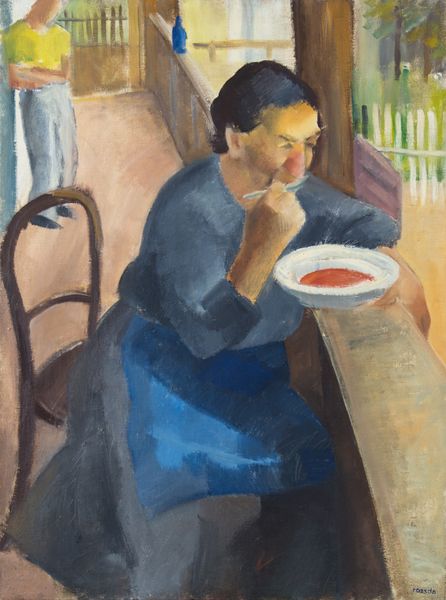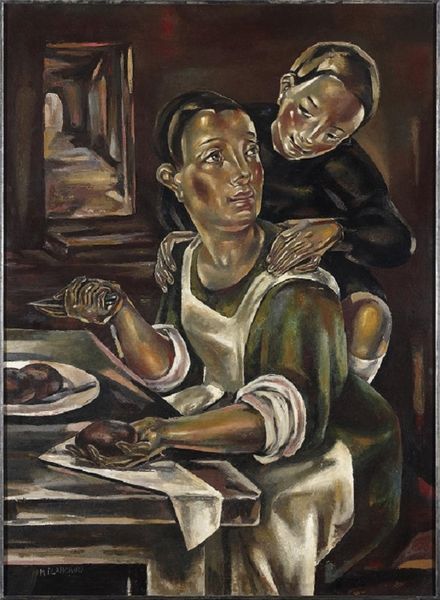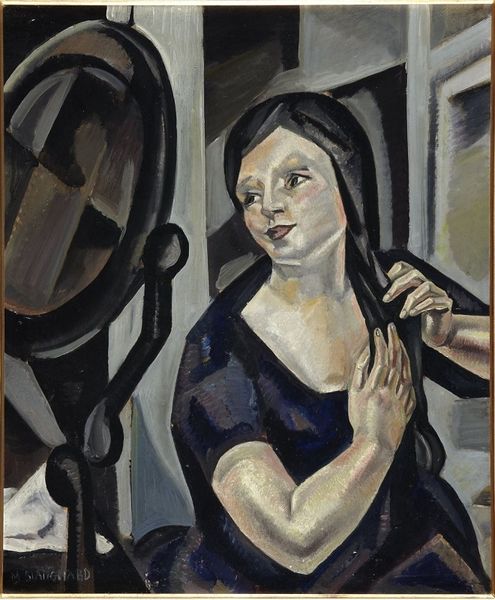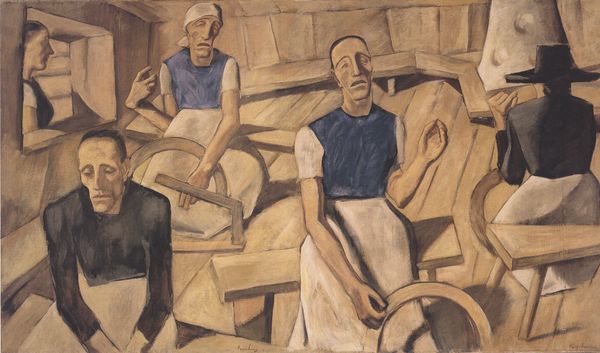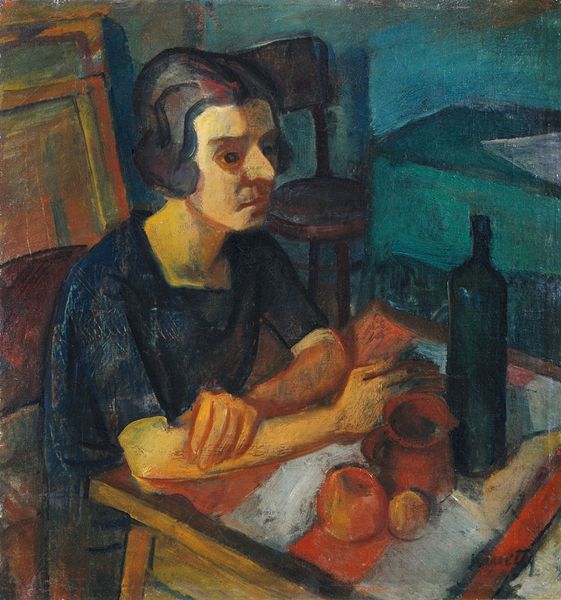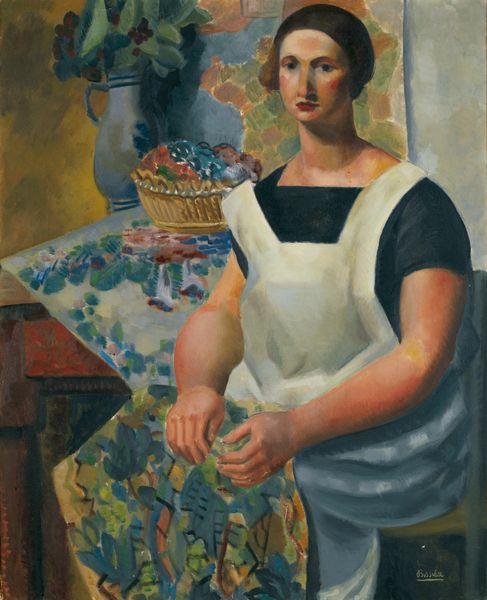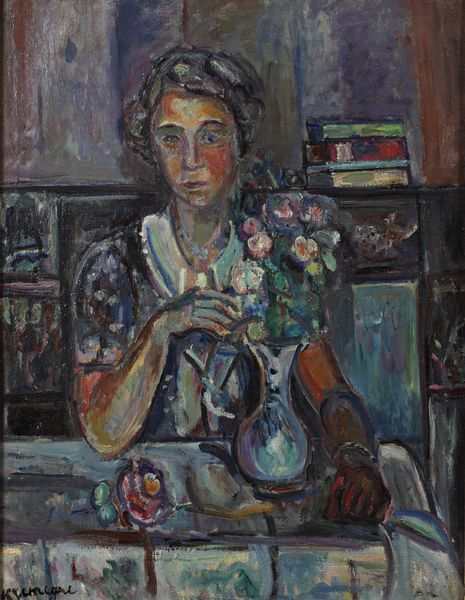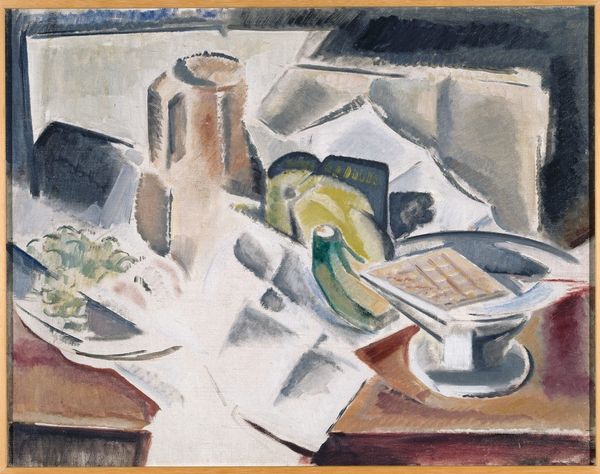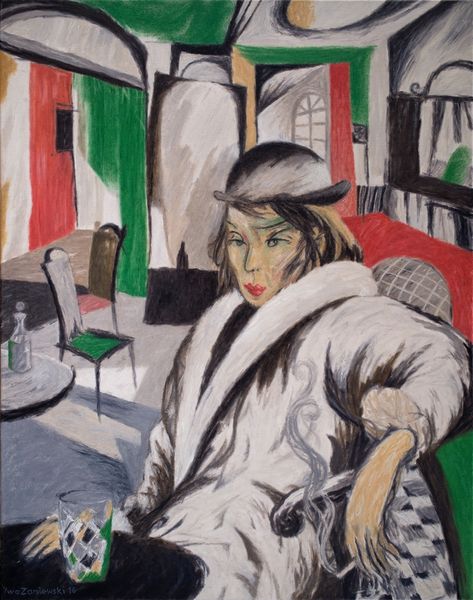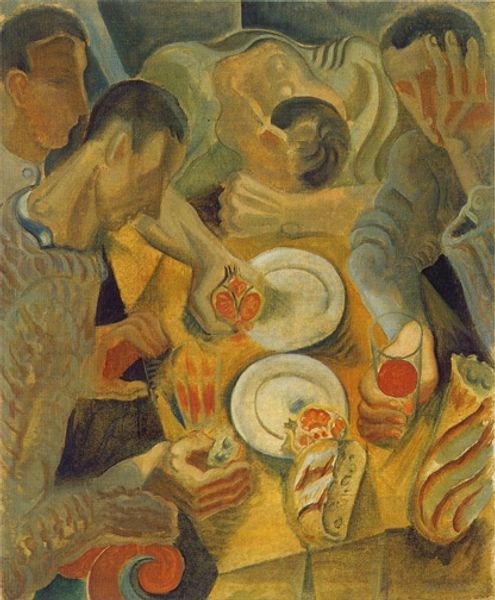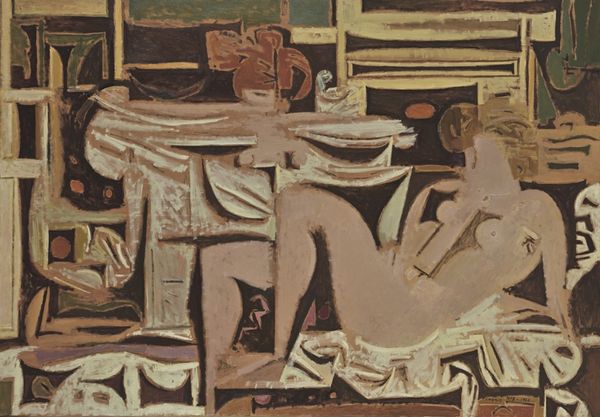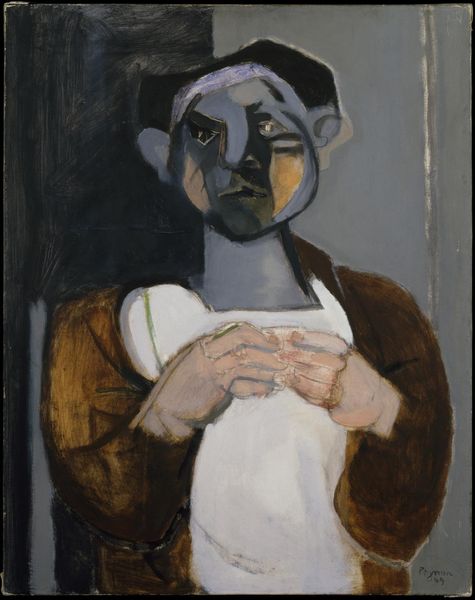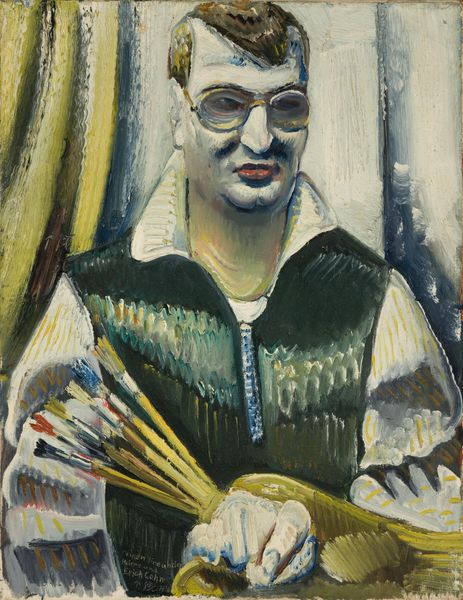
painting, oil-paint
#
portrait
#
cubism
#
painting
#
oil-paint
#
genre-painting
Copyright: Public domain
Editor: We’re looking at "La Fillette à la Soupe," or "Girl with Soup," painted by María Blanchard in 1924. It's an oil painting showing a young girl eating soup. There's something really haunting about it, but I can't put my finger on why. What do you see in this piece? Curator: I see a powerful statement on marginalized identities. Blanchard, a disabled, queer woman working within the male-dominated Cubist movement, often portrayed subjects that mirrored her own experience of being an outsider. Consider the historical context: post-World War I Europe, rife with social upheaval. Who gets to be visible, whose stories are deemed worthy? Editor: So, you're saying the choice of subject – a girl having a simple meal – isn't as straightforward as it seems? Curator: Precisely. Blanchard subverts expectations. Rather than idealizing childhood innocence, she presents a realistic, even somber, image. The muted colors and fractured forms speak to the instability and anxieties of the time. Notice the girl's gaze – she's not simply eating; she's observing, perhaps even challenging the viewer. How might her gaze connect to Blanchard's own position in society? Editor: I hadn't thought about the girl actively observing *us*. It definitely shifts the power dynamic. Knowing Blanchard's background adds so much depth to this seemingly simple scene. Curator: Exactly. Blanchard’s art becomes a vehicle for social commentary. Editor: I came in thinking it was a portrait, but now I realize it’s a statement about the artist and the subject’s roles and position within a time of immense political transition. Curator: Precisely; art becomes a conduit for a powerful social narrative, shifting perception.
Comments
No comments
Be the first to comment and join the conversation on the ultimate creative platform.
